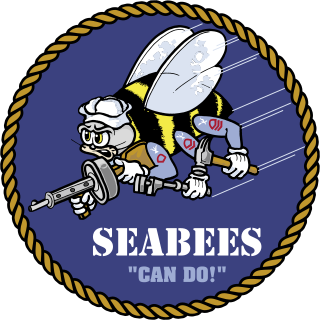
United States Naval Construction Battalions, better known as the Navy Seabees, form the U.S. Naval Construction Force (NCF). The Seabee nickname is a heterograph of the first letters "C B" from the words Construction Battalion. Depending upon how the word is used "Seabee" can refer to one of three things: all enlisted personnel in the USN's occupational field 7 (OF-7), all officers and enlisted assigned to the Naval Construction Force (NCF), or Construction Battalions. Seabees serve outside the NCF as well. During WWII they served in both the Naval Combat Demolition Units and the Underwater Demolition Teams (UDTs). In addition, they served as elements of Cubs, Lions, Acorns and the United States Marine Corps. They also provided the manpower for the top secret CWS Flame Tank Group. Today they have many special task assignments starting with Camp David and the Naval Support Unit at the Department of State. Seabees serve under both Commanders of the Naval Surface Forces Atlantic/Pacific fleets as well as on many base Public Works and USN diving commands.
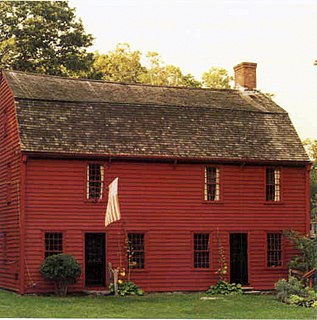
North Kingstown is a town in Washington County, Rhode Island, United States, and is part of the Providence metropolitan area. North Kingstown is home to the birthplace of the famous American portraitist Gilbert Stuart, who was born in the village of Saunderstown. Within the town is Quonset Point, location of the former Naval Air Station Quonset Point, known for the invention of the Quonset hut, as well as the historic village of Wickford. There is a "W" in North Kingstown. Kingston is a village in South Kingstown.

Quonset Point, also known simply as Quonset, is a small peninsula in Narragansett Bay in the town of North Kingstown, Rhode Island. Its name is widely known from the Quonset hut, which was first manufactured there. Quonset is an Algonquian word meaning "small, long place".

A Quonset hut is a lightweight prefabricated structure of corrugated galvanized steel having a semicircular cross-section. The design was developed in the United States, based on the Nissen hut introduced by the British during World War I. Hundreds of thousands were produced during World War II and military surplus was sold to the public. The name comes from the site of their first manufacture at Quonset Point at the Davisville Naval Construction Battalion Center in Davisville, Rhode Island.
Route 403, also known as the Quonset Freeway, is a numbered state highway located in Washington County and Kent County, Rhode Island, United States. The route is a nominally east–west limited-access freeway for its entire length. A spur of Rhode Island Route 4, Route 403 serves Davisville and the Quonset Business Park, providing freeway access to Interstate 95 and the northern Providence metropolitan area from the industrial zone. The western terminus of the freeway is at a trumpet interchange with Route 4 in East Greenwich. The route has three unnumbered interchanges along its 4.5-mile (7.2 km) length, including a junction with U.S. Route 1 in North Kingstown, before terminating at an at-grade intersection with Roger Williams Way and Commerce Park Road in Quonset. Route 403 is the highest numbered route in Rhode Island.

Parks Reserve Forces Training Area (PRFTA), commonly known as Camp Parks, is a United States Army facility located in Dublin, California that is currently a semi-active mobilization and training center for U.S. Army Reserve personnel to be used in case of war or natural disaster.

Davisville, Rhode Island is a village in the town of North Kingstown in the U.S. state of Rhode Island that was formerly the home of the Davisville Naval Construction Battalion Center, which housed the United States Navy's SeaBees.
Quonset Glacier is a glacier about 20 miles (32 km) long which drains the north slopes of Wisconsin Range between Mount LeSchack and Ruseski Buttress and trends west-northwest to enter the north side of Davisville Glacier. Mapped by United States Geological Survey (USGS) from surveys and U.S. Navy air photos, 1960–64, it was named by the Advisory Committee on Antarctic Names (US-ACAN) after the Naval Air Station Quonset Point, Rhode Island, home base of Antarctic Development Squadron Six (VXE-6).
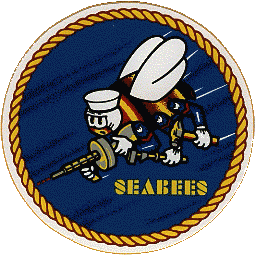
When World War II broke out the United States Naval Construction Battalions (Seabees) did not exist. The vast oceans between the U.S and the enemy on both sides made the logistics of war a major concern. Rear Admiral Moreell completely understood the issues at hand. What needed to be done was build staging bases and create a military construction force to do build them to take the war to the enemy. The concept of Naval Construction Battalions had been developing at Bureau of Yards and Docks (BuDocks) in the 1930s. The onset of war clarified to Radm. Moreell the need to be able to develop advance bases to project American power. The solution was to tap the United States vast pool of skilled labor. Put it in uniform to build anything, anywhere under any conditions and get the Marine Corps to train them. The first volunteers were skilled at enlistment. To obtain these men, military age was modified to take up to 50 years old. It was later found that several past 60 had managed to get in. Men were given advanced rank/pay based upon experience making the Seabees the highest paid group in the U.S. military. The first 60 battalions had an average age of 37.
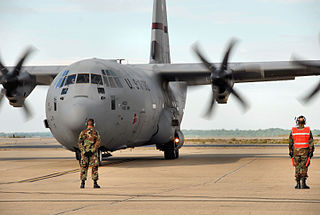
Quonset Point Air National Guard Station is the home base of the Rhode Island Air National Guard 143d Airlift Wing. Naval Air Station Quonset Point was a United States Naval Base in Quonset Point, Rhode Island that was deactivated in 1974. Next to NAS Quonset Point was Camp Endicott at Davisville, home of the Naval Construction Battalions known as the Seabees. Quonset Point also gave its name to the Quonset hut, a standardized temporary structure used by the U.S. military starting in World War II. Former US President Richard M. Nixon went through basic naval officer training at Quonset Point in 1942.

Camp Endicott, was a United States Navy Seabee facility, part of Davisville Naval Construction Battalion Center at Quonset Point in North Kingstown, Rhode Island. A surviving portion of the camp, now mostly demolished, was listed on the National Register of Historic Places in 1978.
Naval Auxiliary Air Facility Nantucket was a United States Navy facility located in Nantucket, Massachusetts operational from 1942 to 1945. It existed as an auxiliary air facility of Naval Air Station Quonset Point.

Naval Base Guam is a strategic U.S. naval base located on Apra Harbor, Guam. In 2009, it was combined with Andersen Air Force Base, to form Joint Region Marianas, which is a Navy-controlled joint base.

Naval Construction Battalion Center Port Hueneme is the West Coast homeport of the Navy’s Seabees. Port Hueneme, supports the training and mobilization requirements for more than 2,600 active-duty personnel. The CBC also operates the 1,600-acre (6.5 km2) Naval Base Ventura County - Port Hueneme installation. The CBC is located on the vast agricultural Oxnard Plain, about 60 miles (97 km) northwest of Los Angeles, on the Southern California coast.
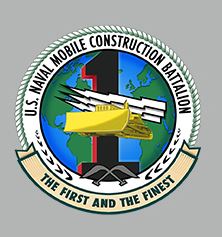
Naval Mobile Construction Battalion 1, is a United States Navy Seabee battalion. NMCB 1 has a long, proud and distinguished history as the very first Naval Construction Battalion of the service that would become known as the Seabees.

Naval Training Center San Diego (1923–1997) is a former United States Navy base located at the north end of San Diego Bay. The Naval Training Center site is listed on the National Register of Historic Places, and many of the individual structures are designated as historic by the city of San Diego.

Air Development Squadron Six was a United States Navy Air Development Squadron based at McMurdo Station, Antarctica. Established at Naval Air Station Patuxent River, Maryland on 17 January 1955, the squadron's mission was to conduct operations in support of Operation Deep Freeze, the operational component of the United States Antarctic Program.

Naval Mobile Construction Battalion SEVEN (NMCB 7) was a Navy Seabee battalion based out of Naval Construction Battalion Center. Nicknamed the "Magnificent Seven", it is one of the ten original NMCBs authorized by the U.S. Navy in 1942.
The preliminary 1991 Base Realignment and Closure Commission list was released by the United States Department of Defense in 1991 as part of the ongoing Base Realignment and Closure Commission. The list recommended closing 28 major United States military bases throughout the nation. This was the last Base Realignment and Closure Commission prior to the dissolution of the Soviet Union ending the Cold War.
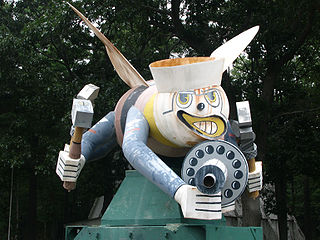
Seabee Museum and Memorial Park is a non-profit military history museum in Davisville, Rhode Island, devoted to the Seabees of the U.S. Navy.
















